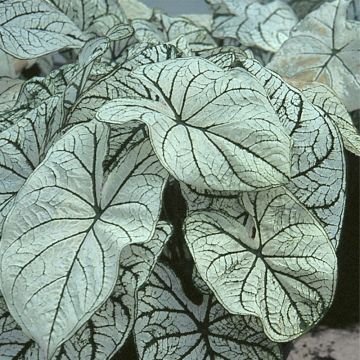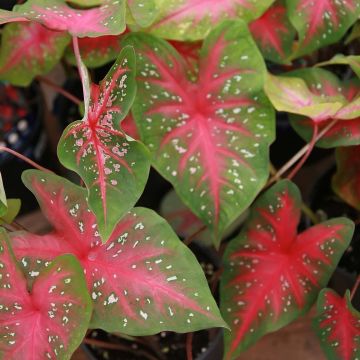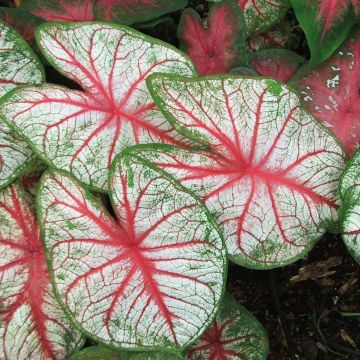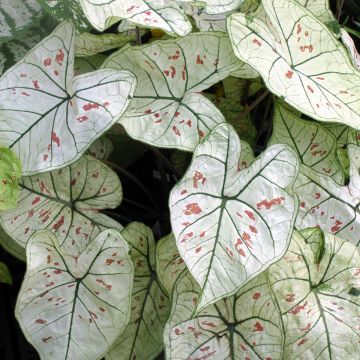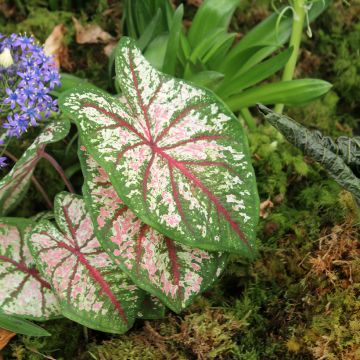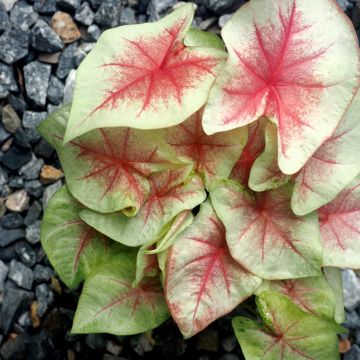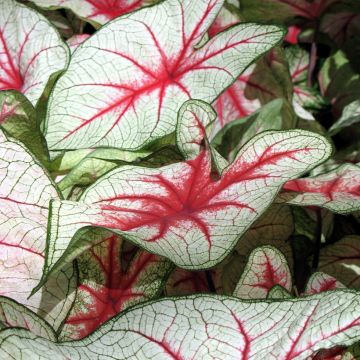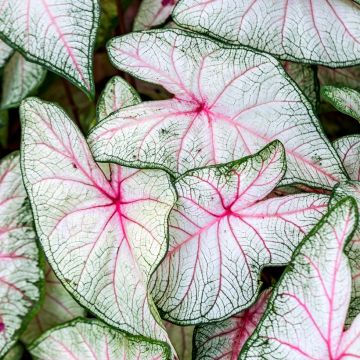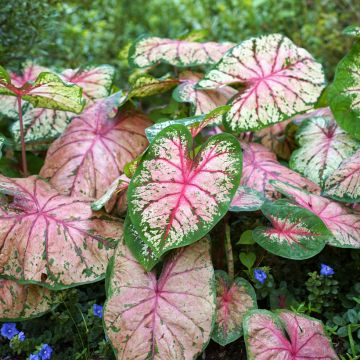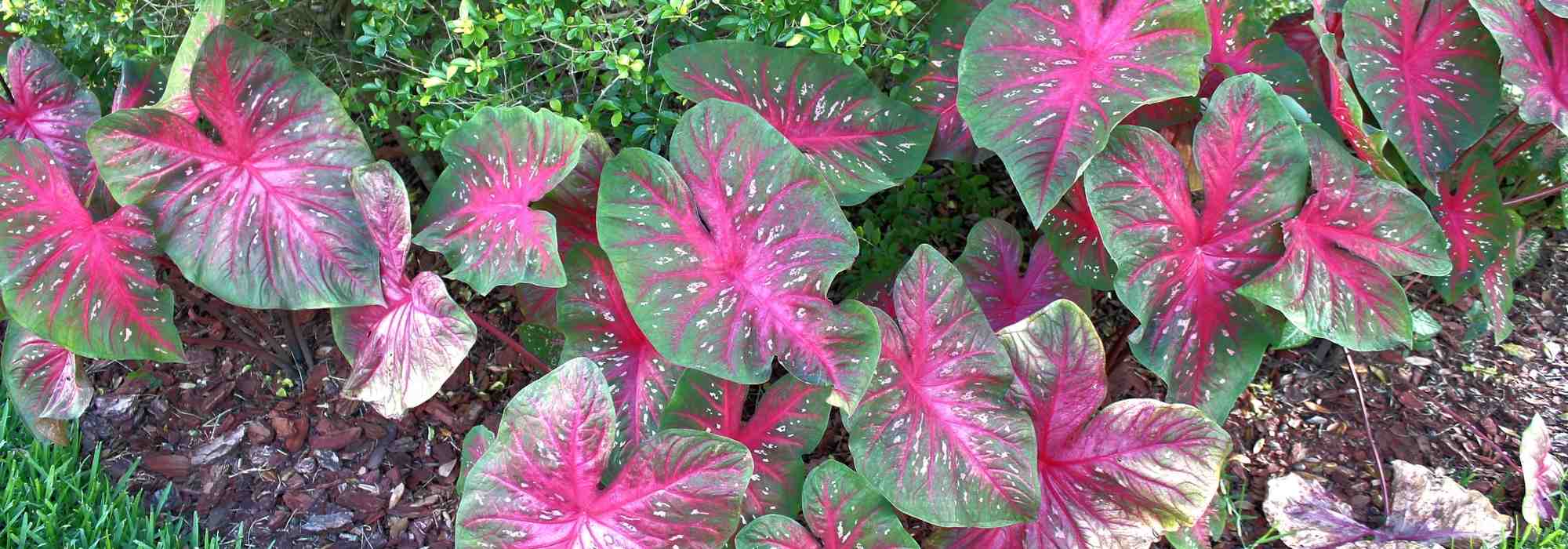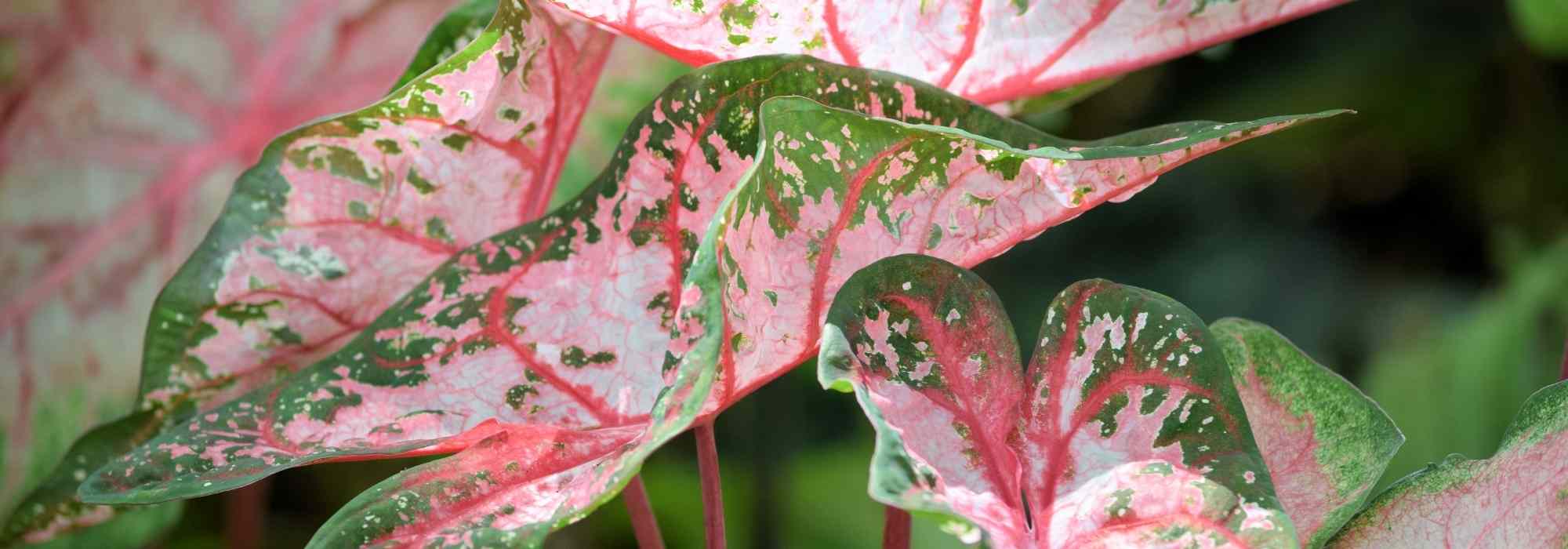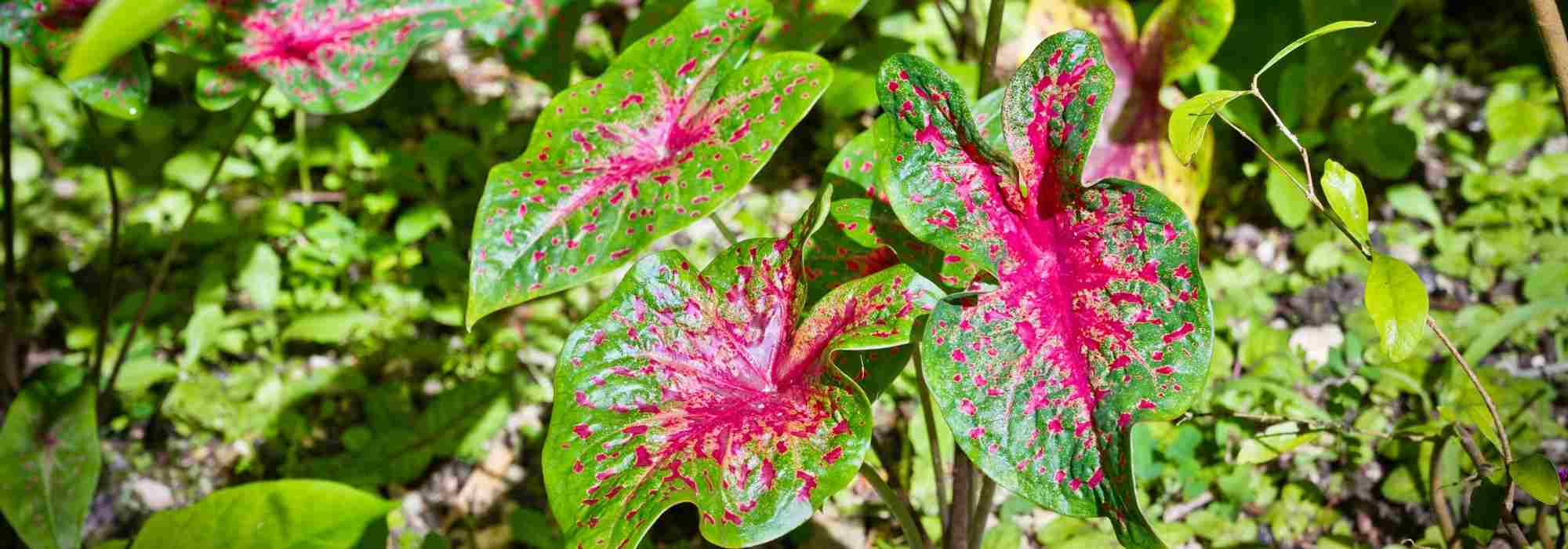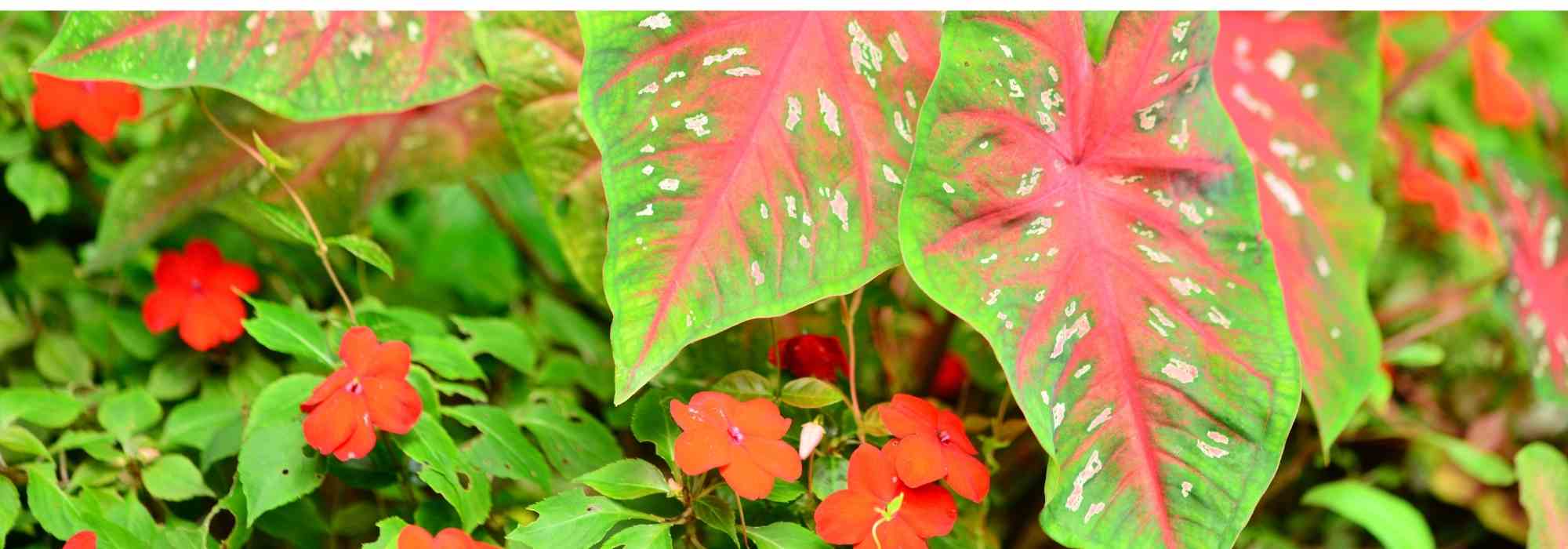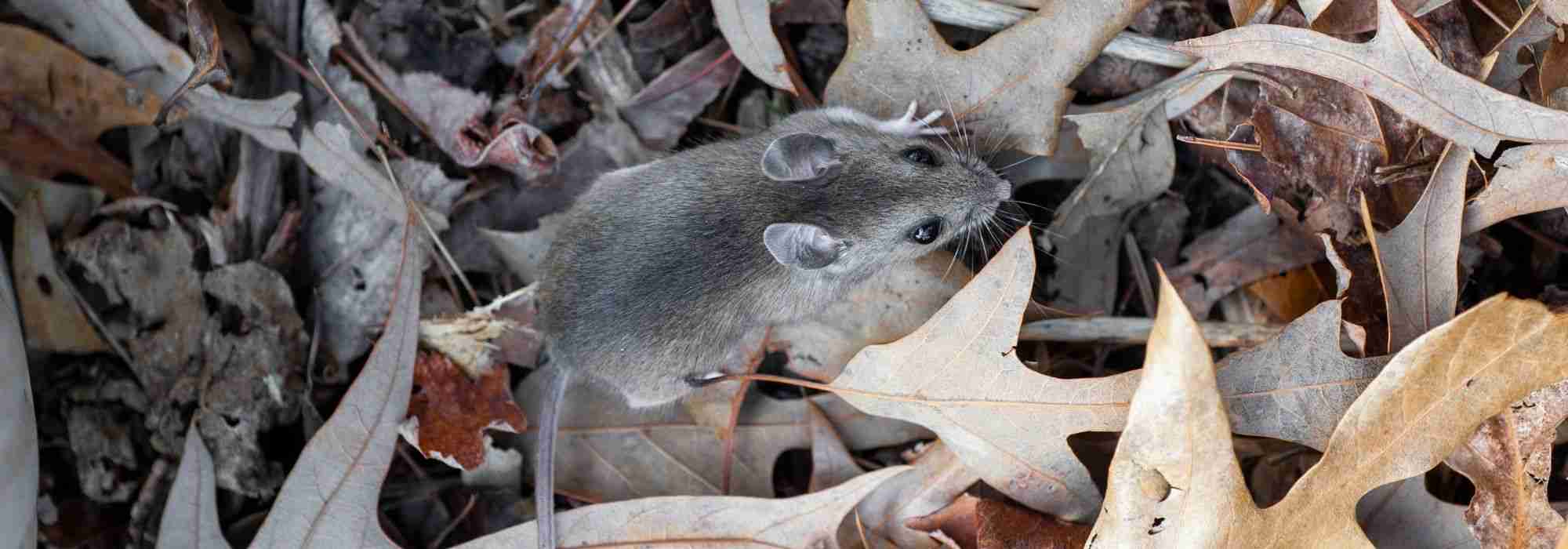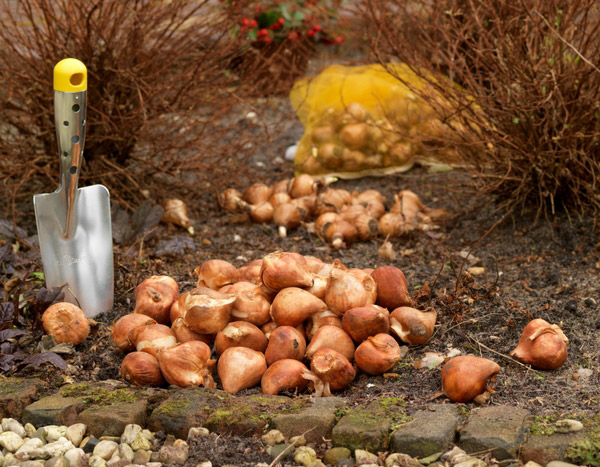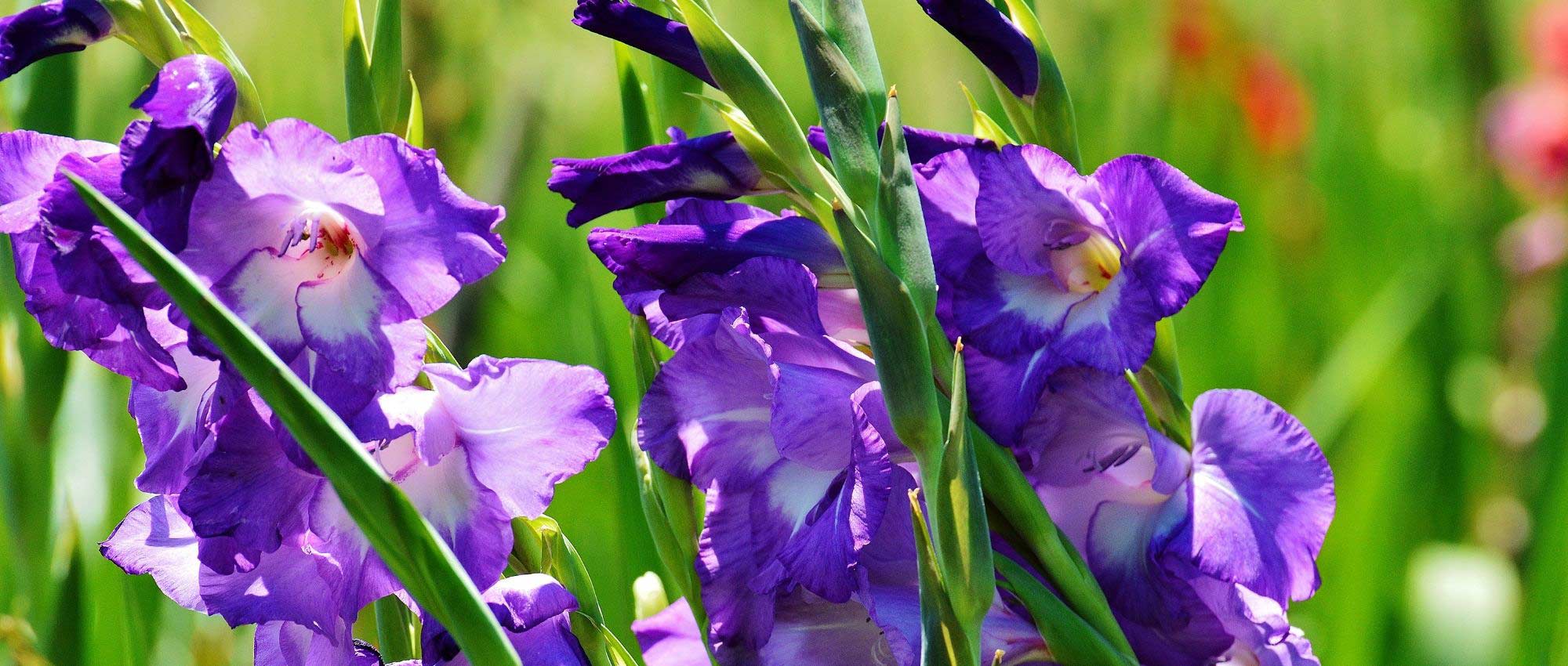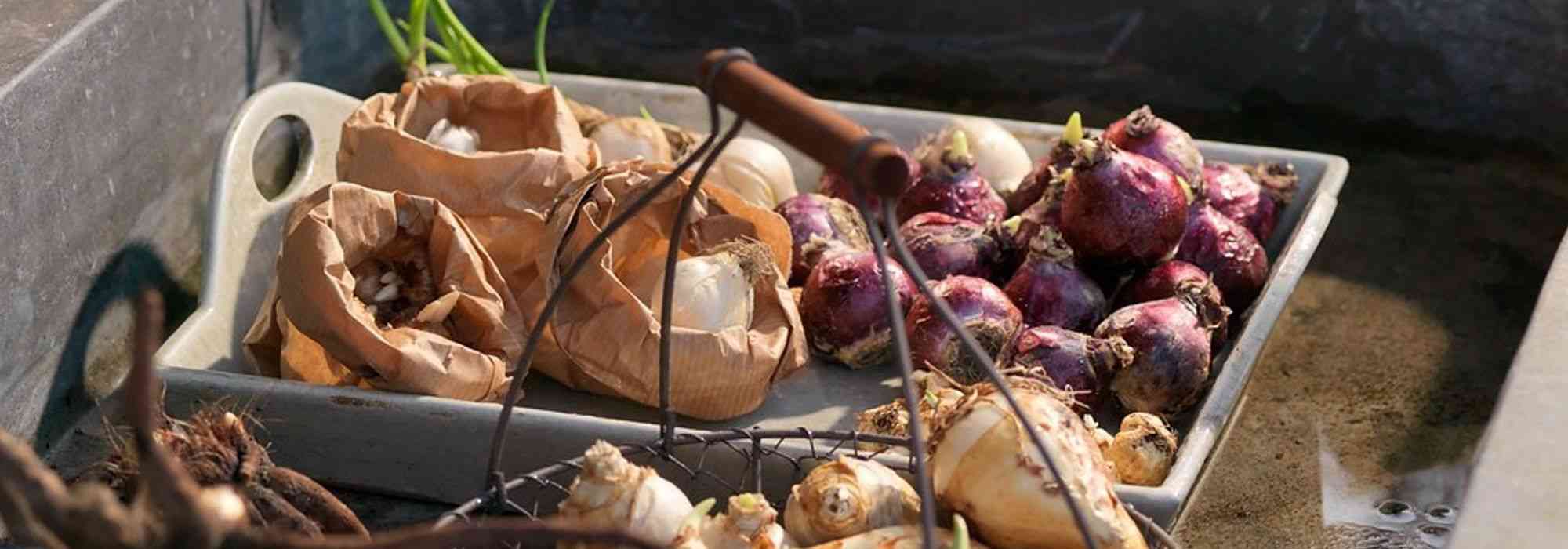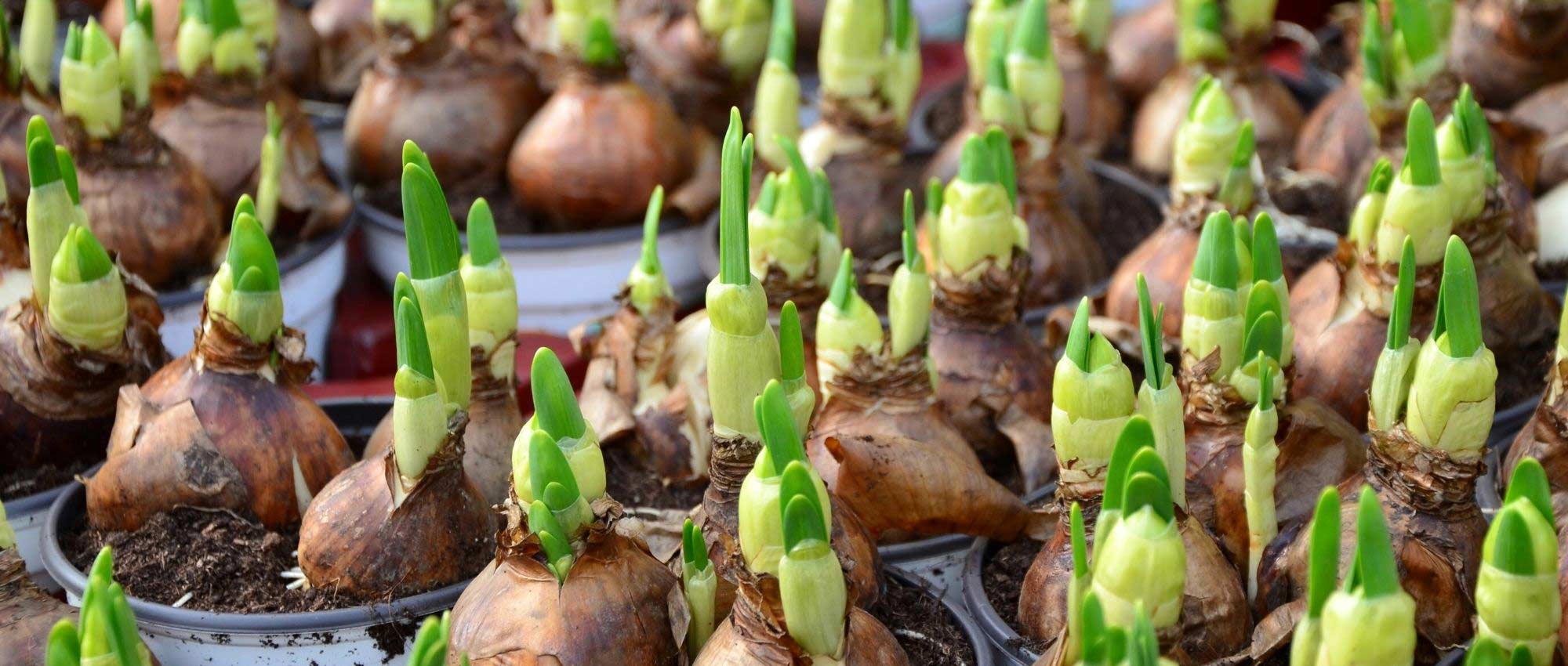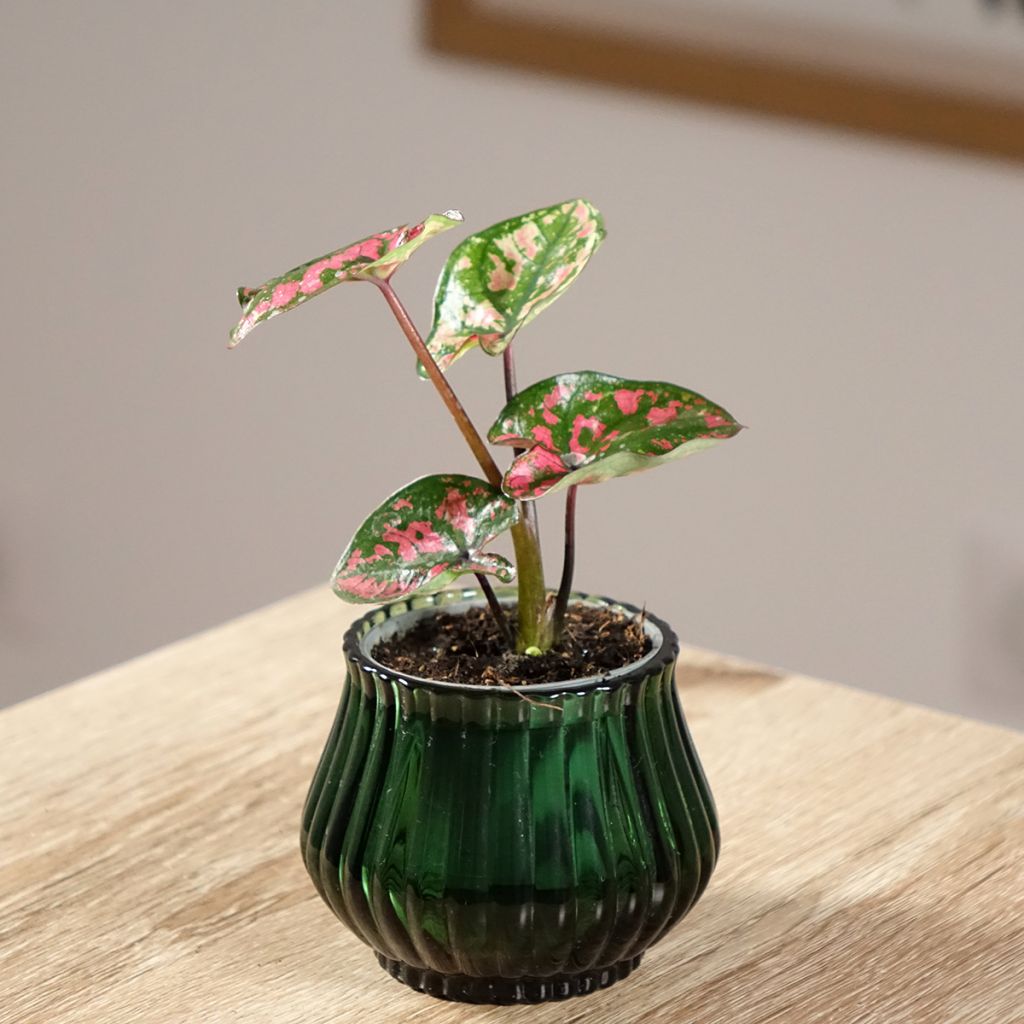

Caladium Purple Light - Elephant ear
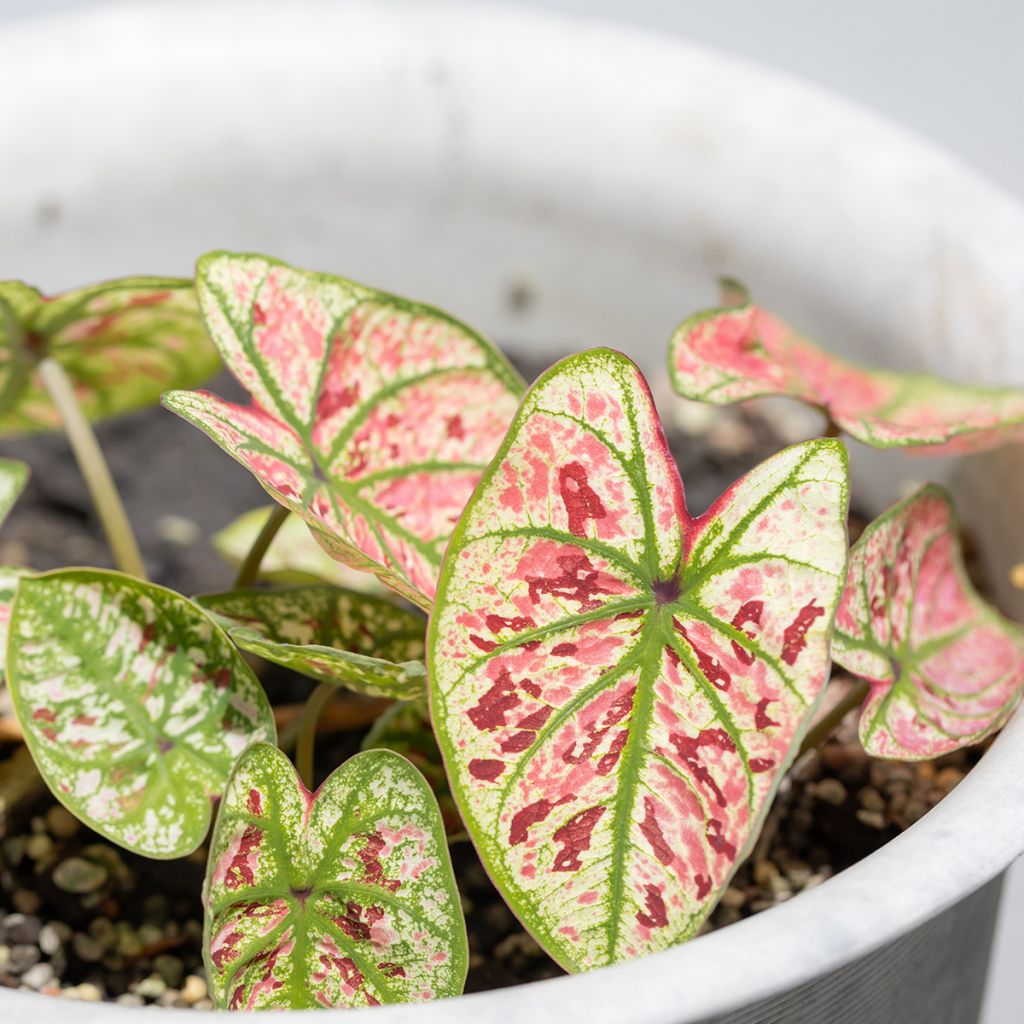

Caladium Purple Light - Elephant ear
Caladium Purple Light - Elephant ear
Caladium bicolor Purple Light
Elephant ear
Special offer!
Receive a €20 voucher for any order over €90 (excluding delivery costs, credit notes, and plastic-free options)!
1- Add your favorite plants to your cart.
2- Once you have reached €90, confirm your order (you can even choose the delivery date!).
3- As soon as your order is shipped, you will receive an email containing your voucher code, valid for 3 months (90 days).
Your voucher is unique and can only be used once, for any order with a minimum value of €20, excluding delivery costs.
Can be combined with other current offers, non-divisible and non-refundable.
In stock substitutable products for Caladium Purple Light - Elephant ear
View All →This plant benefits a 30 days rooting warranty
More information
We guarantee the quality of our plants for a full growing cycle, and will replace at our expense any plant that fails to recover under normal climatic and planting conditions.
Description of Caladium Purple Light - Elephant ear
Caladium 'Purple Light' is a popular houseplant prized for its highly colourful foliage. It grows from a bulb that enters dormancy in winter before resuming growth the following spring. 'Purple Light' offers broad, elongated heart-shaped leaves in various shades of green, speckled and mottled with pink, red, white, or a combination of these colours, with green veins. The Caladium, cherished in the 19th century for its exotic appearance, is enjoying renewed popularity today. It requires high ambient humidity and warmth, at least 20°C, as well as good light without direct sunlight.
Caladium 'Purple Light' originates from Caladium bicolor, also known as Arum bicolor, Caladium x hortulanum. The Caladium genus belongs to the Araceae family and comprises around 15 species native to Brazil and adjacent regions of Central and South America. Commonly, they are called elephant ears, heart of Jesus, or angel wings due to the shape of their large leaves. In the wild, these tuberous plants grow in clearings and along riverbanks. They are active during the rainy season but enter dormancy to survive the dry season. Note that all parts of the plant are toxic to humans. There are over 1000 varieties of Caladium.
The hybrid Caladium 'Purple Light' forms a clump of leaves from spring onwards, measuring approximately 60 to 75 cm in all directions. The heart-shaped leaves, coloured in green, red, pink, and white, measuring roughly 25 cm in length and 12 cm in width, have a characteristic elongated and notched heart shape with a pointed tip. Flowering is unlikely indoors and rather insignificant; it is advisable to remove it to avoid exhausting the plant. The inflorescence takes the form of a yellowish spathe surrounding a column called a spadix, typical of plants in the arum family. In early autumn, reduce watering. The foliage dries up, signalling that the plant is entering dormancy. This is the time to dig up the tubercles, which will spend the winter in barely moist turf or in a jute bag, in the shade, in a cool room maintained between 16 or 18°C. You can also leave the bulbs in the pot, stop watering, and place the pot in a cool, dark room. In spring, bring the pot back into the light or replant the bulbs and place them at a minimum of 20°C or higher, resume watering, or position the pot in a small indoor greenhouse.
Caladium 'Purple Light' will thrive in the living room, bedroom, or office if sufficiently bright. Avoid placing them too close to a bay window unless it has a sheer curtain. Mist them regularly with non-calcareous water or place a humidifier nearby. With good growing conditions, Caladiums reward plant enthusiasts with exceptional foliage from spring to autumn. The light pink foliage of Caladium 'Purple Light' pairs well with that of the variety 'Fantasy', veined in pink, or the large, brilliantly white leaves, finely veined with dark green, of Caladium 'Candidum'.
Caladium Purple Light - Elephant ear in pictures
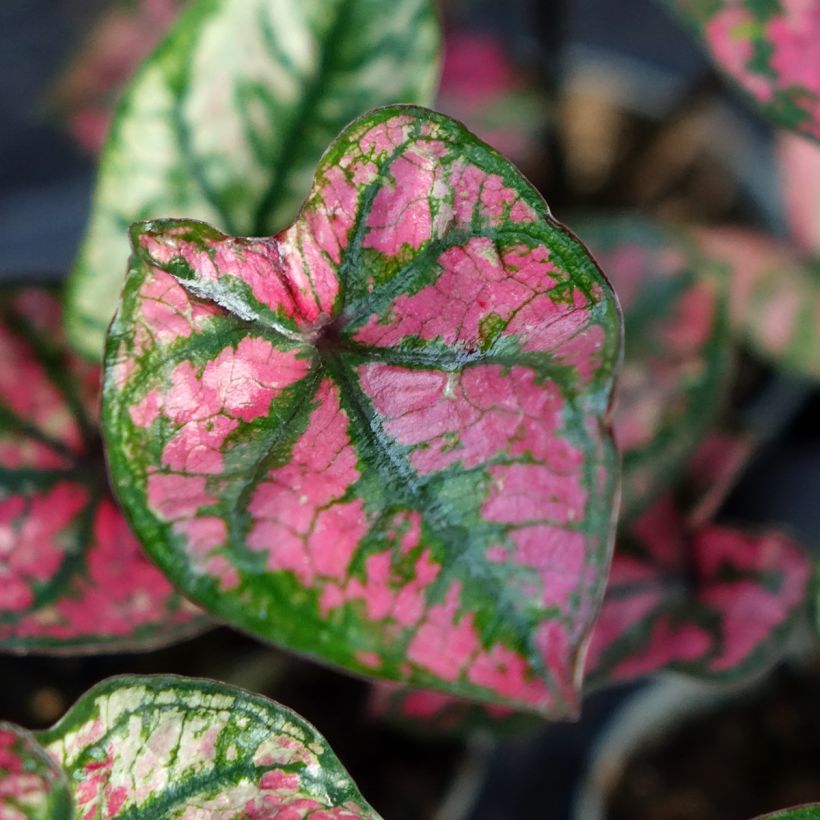

Foliage
Plant habit
Flowering
Botanical data
Caladium
bicolor
Purple Light
Araceae
Elephant ear
Cultivar or hybrid
Hazards
atteintescutaneomuqueuses
Cette plante peut provoquer l'apparition de réactions cutanées indésirables, une atteinte des yeux, ou des difficultés respiratoires si elle est ingérée.
Ne la plantez pas là où de jeunes enfants peuvent évoluer. Evitez tout contact avec la peau: privilégiez l'emploi de gants pour la manipuler. En cas de contact, lavez-vous soigneusement les mains et rincez abondamment à l'eau la zone concernée. Lavez les vêtements entrés en contact. En cas de réaction cutanée, contactez votre médecin ou le centre antipoison le plus proche de chez vous. En cas d'atteinte étendue ou de difficultés respiratoires, appelez immédiatement le 15 ou le 112.Pensez à conserver l'étiquette de la plante, à la photographier ou à noter son nom, afin de faciliter le travail des professionnels de santé.
Davantage d'informations sur https://plantes-risque.info
Location
Location
Plant care
Watering tips
Potting advice, substrates and fertilisers
Houseplant care
Disease and pest advice
Plant care
Planting & care advice
This item has not been reviewed yet; be the first to leave your review about it.
You have not found what you were looking for?
Hardiness (definition)

Photo Sharing Terms & Conditions
In order to encourage gardeners to interact and share their experiences, Promesse de fleurs offers various media enabling content to be uploaded onto its Site - in particular via the ‘Photo sharing’ module.
The User agrees to refrain from:
- Posting any content that is illegal, prejudicial, insulting, racist, inciteful to hatred, revisionist, contrary to public decency, that infringes on privacy or on the privacy rights of third parties, in particular the publicity rights of persons and goods, intellectual property rights, or the right to privacy.
- Submitting content on behalf of a third party;
- Impersonate the identity of a third party and/or publish any personal information about a third party;
In general, the User undertakes to refrain from any unethical behaviour.
All Content (in particular text, comments, files, images, photos, videos, creative works, etc.), which may be subject to property or intellectual property rights, image or other private rights, shall remain the property of the User, subject to the limited rights granted by the terms of the licence granted by Promesse de fleurs as stated below. Users are at liberty to publish or not to publish such Content on the Site, notably via the ‘Photo Sharing’ facility, and accept that this Content shall be made public and freely accessible, notably on the Internet.
Users further acknowledge, undertake to have ,and guarantee that they hold all necessary rights and permissions to publish such material on the Site, in particular with regard to the legislation in force pertaining to any privacy, property, intellectual property, image, or contractual rights, or rights of any other nature. By publishing such Content on the Site, Users acknowledge accepting full liability as publishers of the Content within the meaning of the law, and grant Promesse de fleurs, free of charge, an inclusive, worldwide licence for the said Content for the entire duration of its publication, including all reproduction, representation, up/downloading, displaying, performing, transmission, and storage rights.
Users also grant permission for their name to be linked to the Content and accept that this link may not always be made available.
By engaging in posting material, Users consent to their Content becoming automatically accessible on the Internet, in particular on other sites and/or blogs and/or web pages of the Promesse de fleurs site, including in particular social pages and the Promesse de fleurs catalogue.
Users may secure the removal of entrusted content free of charge by issuing a simple request via our contact form.
The flowering period indicated on our website applies to countries and regions located in USDA zone 8 (France, the United Kingdom, Ireland, the Netherlands, etc.)
It will vary according to where you live:
- In zones 9 to 10 (Italy, Spain, Greece, etc.), flowering will occur about 2 to 4 weeks earlier.
- In zones 6 to 7 (Germany, Poland, Slovenia, and lower mountainous regions), flowering will be delayed by 2 to 3 weeks.
- In zone 5 (Central Europe, Scandinavia), blooming will be delayed by 3 to 5 weeks.
In temperate climates, pruning of spring-flowering shrubs (forsythia, spireas, etc.) should be done just after flowering.
Pruning of summer-flowering shrubs (Indian Lilac, Perovskia, etc.) can be done in winter or spring.
In cold regions as well as with frost-sensitive plants, avoid pruning too early when severe frosts may still occur.
The planting period indicated on our website applies to countries and regions located in USDA zone 8 (France, United Kingdom, Ireland, Netherlands).
It will vary according to where you live:
- In Mediterranean zones (Marseille, Madrid, Milan, etc.), autumn and winter are the best planting periods.
- In continental zones (Strasbourg, Munich, Vienna, etc.), delay planting by 2 to 3 weeks in spring and bring it forward by 2 to 4 weeks in autumn.
- In mountainous regions (the Alps, Pyrenees, Carpathians, etc.), it is best to plant in late spring (May-June) or late summer (August-September).
The harvesting period indicated on our website applies to countries and regions in USDA zone 8 (France, England, Ireland, the Netherlands).
In colder areas (Scandinavia, Poland, Austria...) fruit and vegetable harvests are likely to be delayed by 3-4 weeks.
In warmer areas (Italy, Spain, Greece, etc.), harvesting will probably take place earlier, depending on weather conditions.
The sowing periods indicated on our website apply to countries and regions within USDA Zone 8 (France, UK, Ireland, Netherlands).
In colder areas (Scandinavia, Poland, Austria...), delay any outdoor sowing by 3-4 weeks, or sow under glass.
In warmer climes (Italy, Spain, Greece, etc.), bring outdoor sowing forward by a few weeks.






























